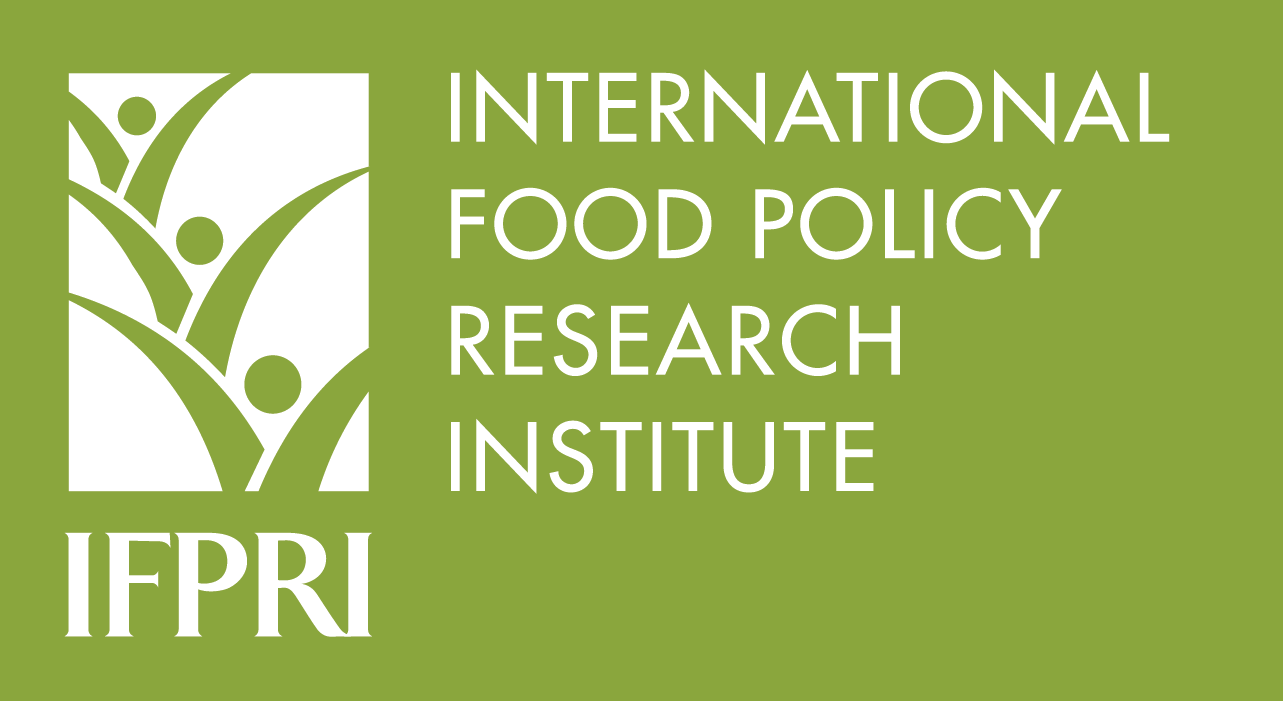Focal point
Location
About IFPRI
The International Food Policy Research Institute (IFPRI) provides research-based policy solutions to sustainably reduce poverty and end hunger and malnutrition in developing countries. Established in 1975, IFPRI currently has more than 500 employees working in over 50 countries. It is a research center of theCGIAR Consortium, a worldwide partnership engaged in agricultural research for development.
Vision and Mission
IFPRI’s vision is a world free of hunger and malnutrition. Its mission is to provide research-based policy solutions that sustainably reduce poverty and end hunger and malnutrition.
What We Do
Research at IFPRI focuses on six strategic areas:
- Ensuring Sustainable Food Production: IFPRI’s research analyzes options for policies, institutions, innovations, and technologies that can advance sustainable food production in a context of resource scarcity, threats to biodiversity, and climate change. READ MORE
- Promoting Healthy Food Systems: IFPRI examines how to improve diet quality and nutrition for the poor, focusing particularly on women and children, and works to create synergies among the three vital components of the food system: agriculture, health, and nutrition. READ MORE
- Improving Markets and Trade: IFPRI’s research focuses on strengthening markets and correcting market failures to enhance the benefits from market participation for small-scale farmers. READ MORE
- Transforming Agriculture: The aim of IFPRI’s research in this area is to improve development strategies to ensure broad-based rural growth and to accelerate the transformation from low-income, rural, agriculture-based economies to high-income, more urbanized, and industrial service-based ones. READ MORE
- Building Resilience: IFPRI’s research explores the causes and impacts of environmental, political, and economic shocks that can affect food security, nutrition, health, and well-being and evaluates interventions designed to enhance resilience at various levels. READ MORE
- Strengthening Institutions and Governance: IFPRI’s research on institutions centers on collective action in management of natural resources and farmer organizations. Its governance-focused research examines the political economy of agricultural policymaking, the degree of state capacity and political will required for achieving economic transformation, and the impacts of different governance arrangements.
Research on gender cuts across all six areas, because understanding the relationships between women and men can illuminate the pathway to sustainable and inclusive economic development.
IFPRI also leads two CGIAR Research Programs (CRPs): Policies, Institutions, and Markets (PIM) andAgriculture for Nutrition and Health (A4NH).
Beyond research, IFPRI’s work includes partnerships, communications, and capacity strengthening. The Institute collaborates with development implementers, public institutions, the private sector, farmers’ organizations, and other partners around the world.
Resources
Displaying 991 - 995 of 1521Development Pathways in Medium- to High-Potential Kenya: A Meso-Level Analysis of Agricultural Patterns and Determinants
The highlands of East Africa have been endowed with a combination of moderate temperatures, adequate rainfall (falling in two distinct seasons for much of the highlands), and productive soils that make the region one of the best suited for agricultural development in all of Africa. As a consequence, the area has a long history of human habitation and supports some of the highest rural population densities in Africa (Hoekstra and Corbett 1995; Pender, Place, and Ehui 1999).
Community Natural Resource Management in the Highlands of Ethiopia
Common property resources1 are important sources of timber, fuelwood, and grazing land in developing countries. When community members have unrestricted access to the resource, or when use regulations are ineffective, these resources are exploited on a first-come, first-served basis. Each individual user of the resource will tend to continue to use the resource until her average revenue is equal to the marginal cost of using the resource (Gordon 1954).
Junior Farmer Field and Life Schools: Experience from Mozambique
In the last 20 years HIV/AIDS has progressed from seemingly isolated small epidemics to a more generalized epidemic. In countries hard hit by the epidemic, HIV/AIDS continues to contribute to the problems faced by youth. A serious consequence of the AIDS epidemic is the growing number of AIDS orphans. In 2003 there were a total of 43 million orphans in Sub-Saharan Africa, of whom 12.3 million were orphaned by AIDS.
Development and evaluation of a regional water poverty index for Benin
The paper discusses the application of the Water Poverty Index (WPI) as a monitoring tool for Benin’s water sector. Benin is currently in a process of political decentralization shifting responsibility for and administration of rural water supplies from the national to the communal level. Appropriate indicators are needed for monitoring and analyzing the progress of the water sector for each community.
Poverty and inequality in Vietnam
This study uses a relatively new method called “small area estimation” to estimate various measures of poverty and inequality for provinces, districts, and communes of Vietnam. The method was applied by combining information from the 1997-98 Vietnam Living Standards Survey and the 1999 Population and Housing Census... Mapping the density of poverty reveals that, although the poverty rates are highest in the remote upland areas, these areas are sparsely populated so most of the poor live in the Red River Delta and the Mekong River Delta...



